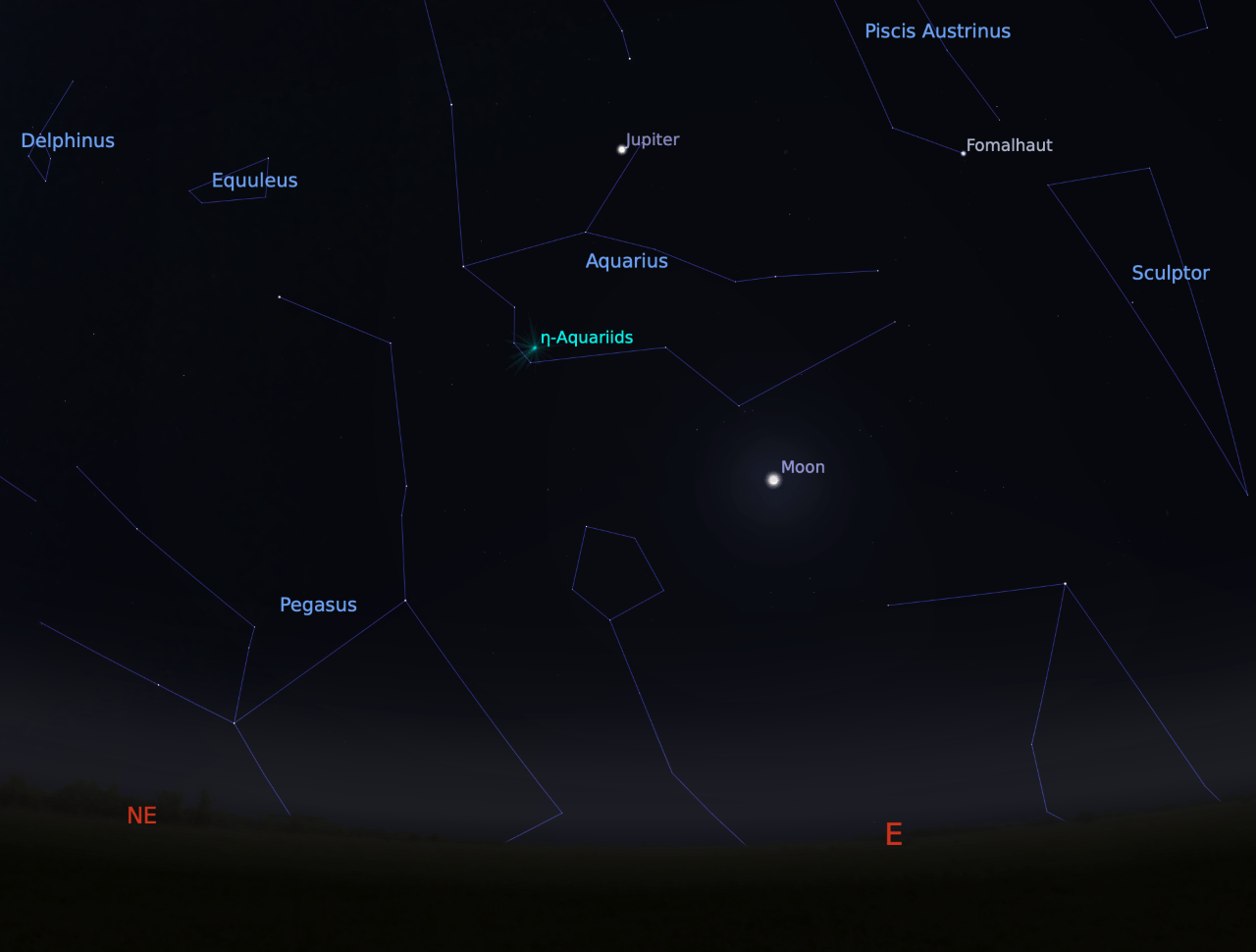One of the best meteor showers of the year is about to grace our skies

Kirsten Banks
Kirsten Banks

The Eta Aquarids is one of many annual meteor showers, much like the Geminids and Orionids, that grace our night skies as the Earth makes its way around the Sun.
I remember the first time I saw a meteor streak across the sky. My stomach filled with excitement as it crossed my vision and appeared to fall behind a distant hill. I got so giddy that I had to pull my car over and let out an excited squeak. So, here’s everything you need to know about the Eta Aquarids meteor shower.
The Eta Aquarids meteor shower is an annual shower caused by little discarded bits of Halley’s comet crossing the Earth’s path and burning up in the atmosphere in a dazzling display.
Even though it has been over three decades since Halley’s comet was visible in the night sky, the last time it passed nearby the Earth it left behind a trail of debris before making its way to the outer regions of the Solar System.
During late April and through into late May the Earth passes through this trail of debris where some bits happen to fall through the Earth’s atmosphere and streak across the night sky.
The shower usually begins around the 19 April and lasts until around late May every year. While it’s possible to see meteors throughout this whole time, the best chance to see some Eta Aquarids is on the night of 6 or 7 May when the meteor shower is at its peak. During this time, you’ll likely be able to see up to 50 meteors per hours.
You may have noticed that many meteor showers are named after various constellations and the Eta Aquarids are no exception. This meteor shower is named after the constellation of the water bearer Aquarius.
Why is this the case? During a meteor shower, meteors can be seen all across the sky, but they all appear to originate from the same part of the sky. This is known as the radiant point and for the Eta Aquarids that point lies within the constellation of Aquarius. Lucky for us Southern Hemisphere dwellers Aquarius lies high in the Autumn sky meaning that we get a front row seat to this meteor shower.

If you want to feel your stomach flutter with excitement the best way to try and catch one of the Eta Aquarids is to find a dark place with little light pollution and little direct light.
If you’re near a big city, a dark nearby park or somewhere on the coastline away from direct light will help your chances of seeing a meteor. But there is a catch, unless you’re an early riser or a night owl, you’re going to want to either set a pretty early alarm or stay up quite late.
The Eta Aquarids radiant point begins to rise from about 1:30am on the night of the shower’s peak and is highest in the pre-dawn sky. Remember to take a blanket and a hot beverage!
Once you’ve either stayed up late or managed to wake up in the early hours of the morning and you’re all rugged up with your hot beverage under a dark sky, you’ll need to find Aquarius in the sky.
Despite myself being an astrophysicist I often struggle to find many constellations in the night sky except for a few notable constellations such as the Scorpion, Orion and, of course, the Southern Cross, so unless you have a night sky app on your phone you might also struggle to find the water bearer in the sky.
Luckily for us there is a bright planet shining a spotlight in Aquarius during the duration of the meteor shower. If you look toward the East in the early hours of the morning of the 6 and 7 May you’ll find Jupiter shining brightly right in the middle of Aquarius.
Once you’ve found a comfortable dark spot, you’ve spotted Jupiter in Aquarius and are all rugged up, get ready to spot some meteors!
The exciting thing about the Eta Aquarids is that they’re known for their speed. These little bits of Halley’s comet plummet through the atmosphere at 237,600km/hr (66 km/s)! That’s equivalent to travelling from Sydney to Melbourne in just over 10 seconds. Quick meteors like this can leave streaks of glowing debris in the wake of the meteor that can last for a few seconds up to minutes, so with clear skies the Eta Aquarids should put on a good show.




